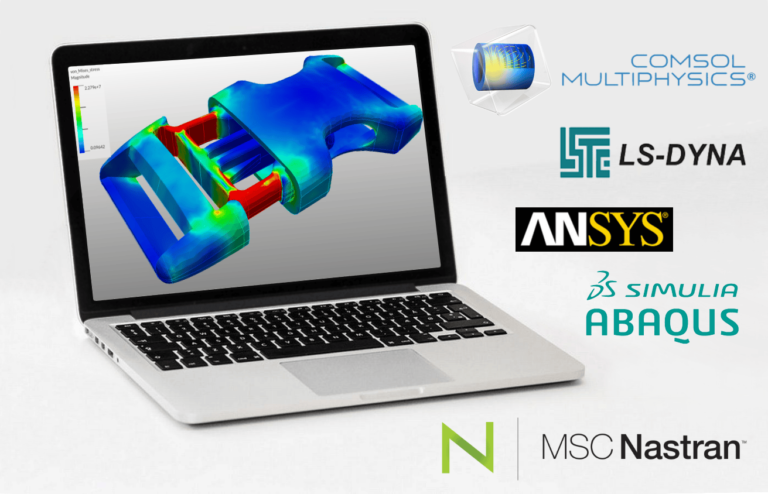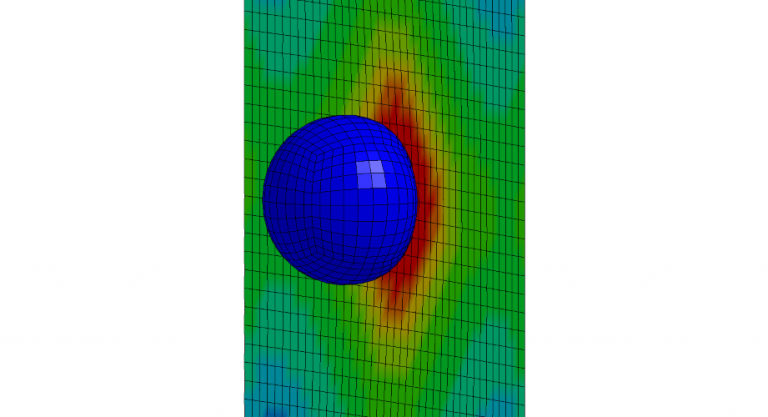Beginner’s Guide to Finite Element Analysis
Have you ever wondered how engineers make sure bridges won’t collapse or how car manufacturers know their vehicles will be safe in a crash? One of their most powerful tools is something called Finite Element Analysis, or FEA for short. Don’t worry if that sounds intimidating – we’re going to break it down into simple pieces that anyone can understand!
What is Finite Element Analysis?
Imagine you’re trying to figure out if a diving board at a pool will break when someone jumps on it. You could try to calculate this using one big mathematical equation, but that would be incredibly complex. Instead, FEA takes a clever shortcut: it breaks the diving board into many small, simple pieces (called “elements”) and analyzes each one separately. It’s like solving many small puzzles instead of one giant one!

The Basic Steps
- Breaking Things Down (Meshing)
- First, we take our object (like that diving board) and divide it into smaller pieces
- These pieces can be triangles, squares, or other simple shapes
- The smaller and more numerous the pieces, the more accurate our analysis will be
- Engineers call this divided version a “mesh” because it looks like a net
- Setting the Stage (Boundary Conditions)
- We tell the computer what’s happening to our object
- Where is it fixed? Where are forces being applied?
- In our diving board example:
- One end is firmly attached to the pool deck
- Someone’s weight is pushing down on the free end
- Solving the Problem Simulation
- The computer calculates how each small element responds to the forces
- It makes sure all the pieces work together properly
- This gives us important information like:
- How much the object will bend
- Where it might break
- Which areas are under the most stress

Real-World Applications
FEA isn’t just for diving boards! It’s used in countless situations:
- Automotive: Optimize vehicle structure to absorb energy in a crash
- Buildings: Making sure skyscrapers can withstand earthquakes and storms
- Medical Devices: Designing better prosthetic limbs
- Consumer Products: Testing if your phone will survive being dropped
- Aerospace: Ensuring airplane wings can handle extreme conditions
Why FEA Matters
Think of FEA as a virtual testing ground. Instead of building multiple prototypes and breaking them (which would be expensive and time-consuming), engineers can use computers to:
- Test designs before building anything
- Find and fix problems early
- Try out different materials
- Optimize designs to use less material while retaining strength
- Save time and money in the development process
Limitations and Common Misconceptions
Like any tool, FEA isn’t perfect:
- Results are only as good as the input data
- It’s an approximation, not an exact solution
- Expert knowledge is still needed to interpret results
- Real-world testing is often still necessary
Getting Started with FEA
If you’re interested in learning more, here are some ways to begin:
- Start with simple 2D problems
- Learn basic engineering principles first
- Practice with free FEA software like FreeCAD or student versions
- Focus on understanding the physics behind the problems
- Join online communities and forums for support (like ours!)
Final Thoughts
Finite Element Analysis might seem like magic, but it’s really just a clever way of breaking big problems into manageable pieces. Whether you’re designing the next revolutionary product or just curious about how things work, understanding FEA basics can open up a whole new way of thinking about engineering problems.
Remember: every expert started as a beginner, and even the most complex analyses begin with these fundamental concepts. Happy analyzing!
Have a question or comment? Join the discussion here.




